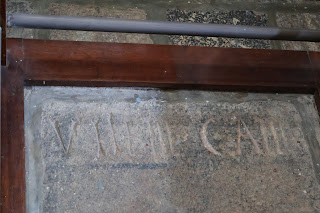Saint Francis Church, in Fort Kochi, Kochi, India, originally built in 1503, is one of the oldest European churches in India and has historical significance as a witness to the European colonial ambitions in the subcontinent.
The Portuguese explorer Vasco da Gama died in Kochi in 1524 when he was on his third visit to India.
His body was originally buried in this church, but after fourteen years his remains were relocated to Lisbon, Portugal, and is now interred at Jerónimos Monastery.
|
Facade of Saint Francis Church
|
|
St. Francis Church, Fort Kochi, District : Ernakulam «St. Francis Church is one of the oldest European Churches in Kerala. It is a major landmark on Fort Kochi and was built in the 16th Century CE. The history of this Church reflects the colonial struggle of the European powers in India from 15th to 20th centuries. The flood in Periyar during 14th century CE changed Kochi as a natural harbour and the marine trade became prolific along with Kozhikode and Kannur. The arrival of Portuguese navigator Vasco da Gama in 1498, led to the foreign supremacy over India. The Portuguese Commander Admiral Cabral visited Kochi in 1500 CE and Unni Rama Koil, then the Raja of Kochi permitted him to trade here. In 1503 CE, Alphonso Albuquerque was given permission by the Raja to build a fort at the mouth of the river. The five friars, who accompanied Albuquerque to Kochi in 1503 CE, erected a wooden Church dedicated to St. Bartholomew within the temporary fort made with mud and bamboo. Later on the Church was rebuilt in stone and tile roofed. The Franciscans raised the present edifice, in the name of St. Anthony in 1516 CE. The first Portuguese navigator, Vasco da Gama’s mortal remains was buried in the Church. Later on, his son Pedro de Silva da Gama took his mortal remains back to Portugal in 1538 CE. The east facing Church has an impressive frontage that reflects the typical Portuguese style. The facade with an arched opening and one of the tiers has flanking windows between the pilasters, a belfry over the gabled front and stepped pinnacles on sides. From 1510 CE to 1663 CE the Portuguese officially called St. Francis Church as the conventional Church of the order of the St. Francis of Assisi. The Dutch made changes in name and structure of this Church and did some major restoration works in 1779 CE. After the advent of the British, it was the Government Protestant Church from 1819-46 CE. However, this church was known by the name St. Francis only after the substantial restoration and renovation carried out by the British in 1886-87 CE. This is a Centrally Protected Monument under the control of Archaeological Survey of India since 1923.» |
|
Monument commemorating those who fell in the First World War of 1914-1918 |
|
Entering the church |
|
Interior of the church |
|
Temporary tomb of Vasco da Gama |
|
Remembering Vasco da Gama
|
|
Choir singing next to the church altar |
|
House of Portuguese architecture next to the church |
See Also
-
Fort Kochi, Kochi
-
Mattancherry Palace, Kochi
-
Paradesi Synagogue, Kochi
-
Cochin Cultural Centre, Kochi
Source
Location












